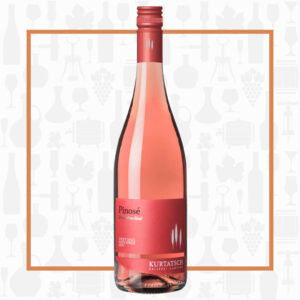Cellar Profile
This organic winery is situated in the picturesque village bearing its name in Alto Adige, nestled in the Southern Alps and Dolomite mountain ranges. Its hand-crafted mountain wines are painstakingly made with as little intervention as possible to best exemplify the unique terroir of the region. These red wine vineyards have some of the hottest daytime temperatures in all of Italy, rising to 40℃ during the summer months, but with a significant drop in temperature in the evening to retain freshness. The whites come from the hamlets of Hofstatt and Penon, with heroic vineyards planted on exceedingly steep mountainsides at elevations up to 2500 ft above sea level. These rocky outcrops have a multitude of geological peculiarities, giving their wines intense, saline-like minerality. These are amongst the most aromatic and flavourful white wines on earth, ranging in style from steely dry to lusciously sweet.
Region
The region of Trentino-Alto Adige is bordered by East and North Tyrol (Austria) to the northeast and north respectively, by Graubünden (Switzerland) to the northwest and by the Italian regions of Lombardy to the west and Veneto to the south and southeast. It covers 13,607 square kilometres and is extremely mountainous, covering a large part of the Dolomites and the southern Alps. Südtirol (where Cantina Kurtatsch is located) has an area of 7,398 square kilometres, all of it mountainous land and covered by vast forests. The climate here is Mediterranean (hot summer and cold winters) owing to the influence of the many mountain ranges, which stand at over 3,000 metres above sea level, and the wide valleys through which flows (from north to south) the main river, the Adige, and its numerous tributaries.
Vineyard
This rosé is sourced from the Mazon and Glen vineyards. These are both exposed to intense midday sun, consistent daytime temperatures and cool evenings. The vineyards have a mixture of sandy loam, clay and Dolomite. The Glen vineyards are quite steep, while the Mazon, not quite as steep, are still at very high elevation. These are both considered some of the finest vineyards in Northern Italy for the production of Pinot Noir.
Varieties
Pinot Noir—chiefly associated with the Burgundy region of France— is grown around the world, mostly in cooler climates. The grape’s tendency to produce tightly-packed clusters makes it susceptible to several viticultural hazards involving rot that require diligent canopy management. When young, wines made from Pinot Noir tend to have red fruit aromas of cherries, raspberries and strawberries. As the wine ages, Pinot has the potential to develop more vegetal and earthy aromas that can contribute to the complexity of the wine. Thin skins and low levels of phenolic compounds lend Pinot to producing mostly lightly-coloured, medium-bodied and low-tannin wines that can often go through phases of uneven and unpredictable aging.
Winemaking
This gentle rosé is made using the Saignée method, bleeding off juice from partially fermented Pinot Noir and continuing the fermentation without skins in a separate vessel. The wine then finished its fermentation slowly in temperature-controlled vats.
Tasting Notes
This rosé offers intense fresh red berry and spice elements on the nose. There is a touch of tannin and zesty acidity, framing a mid-weight mouth feel. The berries continue through on the palate, with hints of watermelon and cranberry. There is a touch of residual sweetness, but this is a dry style for Northern Italy.

 info@buyersandcellars.ca
www.buyersandcellars.ca
info@buyersandcellars.ca
www.buyersandcellars.ca